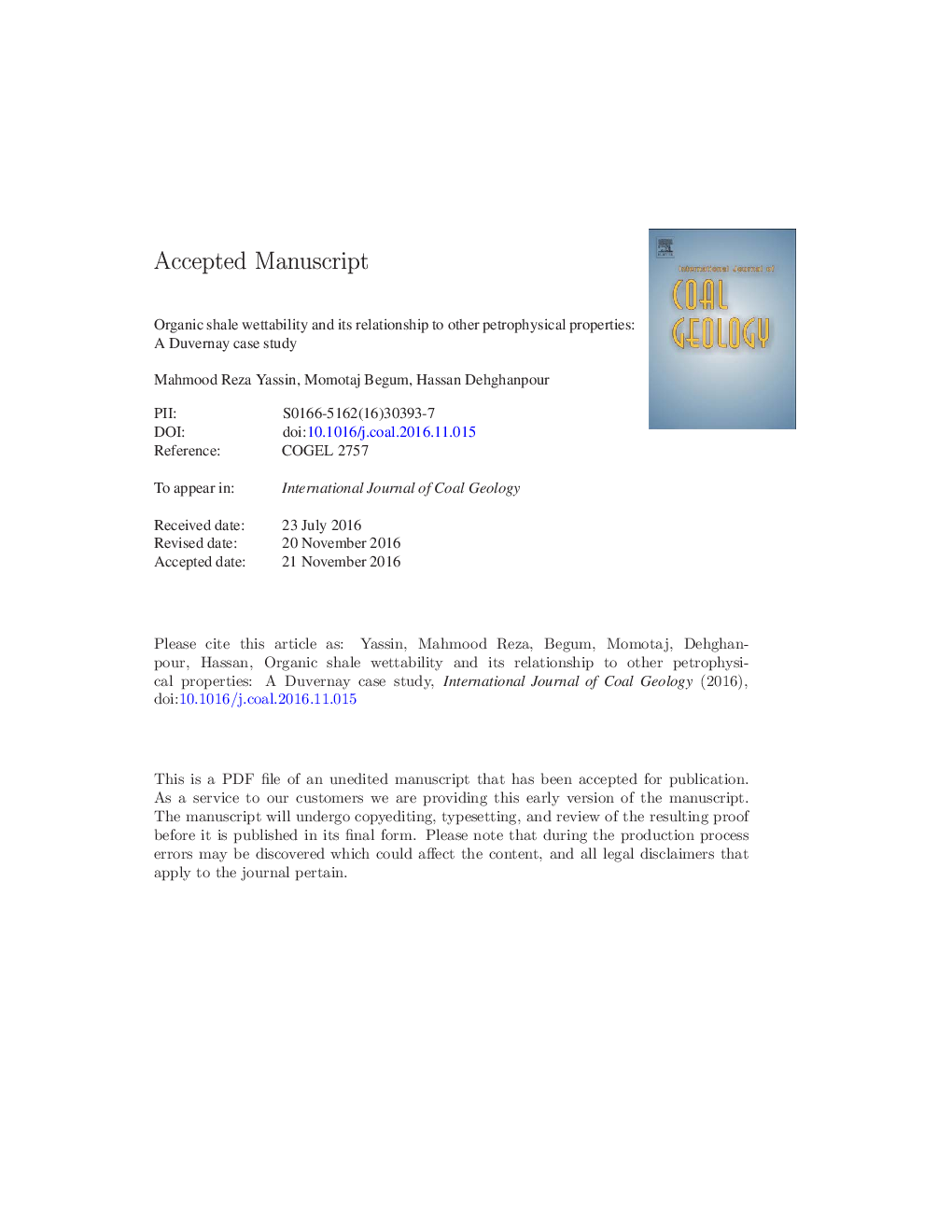| Article ID | Journal | Published Year | Pages | File Type |
|---|---|---|---|---|
| 5483783 | International Journal of Coal Geology | 2017 | 28 Pages |
Abstract
Analysis of the data reveals a positive correlation of TOC content with effective porosity, pressure-decay permeability, and oil saturation of the samples. Bulk density and matrix density of the core samples decrease with increasing the TOC content. The crossplots indicate that the majority of pores exist in the organic matter of the samples and these organic pores have high affinity towards oil. Scanning Electron Microscope (SEM) and energy-dispersive X-ray spectroscopy (EDS) analyses also demonstrate an abundant number of small nanopores within the organic matter. These hydrophobic small nanopores with diameters <Â 100Â nm may explain high imbibed volume of oil compared with that of brine, and also late equilibrium of oil imbibition. SEM and EDS analysis also show large micropores bordered by inorganic minerals. According to Handy's model, these hydrophilic micropores with diameters >Â 1000Â nm may explain early equilibrium of brine in spontaneous imbibition experiments. We define pore wettability index of oil (PWIo) and brine (PWIw) based on the imbibition rate of oil and brine, respectively. PWIo is greater than PWIw in all spontaneous imbibition tests. Higher PWIo compared with PWIw indicates that oil preferentially flows through smaller pores while brine prefers to flow through larger pores. We also define oil wettability index (WIo) based on the equilibrium imbibed volume of oil and brine. The results of spontaneous imbibition experiments show that the samples with higher TOC content and effective porosity have higher WIo. Positive correlations of WIo with TOC content and effective porosity suggest that the majority of hydrophobic connected pores exist in the organic part of the rock. In addition, we observe negative correlation of WIo with oxygen index (OI). This observation can be explained by 1) higher number of organic nanopores, and 2) stronger oil-wetness of kerogen in samples with higher kerogen maturity (lower OI).
Related Topics
Physical Sciences and Engineering
Earth and Planetary Sciences
Economic Geology
Authors
Mahmood Reza Yassin, Momotaj Begum, Hassan Dehghanpour,
